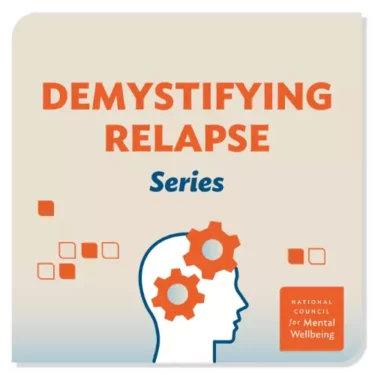The opioid epidemic has spared no one. But the impact on some groups has received less attention.
An estimated 1 million older people in the United States have a substance use challenge, but they are less likely to seek treatment, even though they are just as likely to benefit from treatment as any other age group.
What does substance use in older Americans look like? Two-thirds of older adults who live with substance use disorder have a persistent condition (early onset beginning before age 22), and one-third develop a substance use challenge later in life.
Risk factors for substance use development in older adults include loneliness or social isolation (single, divorced, widowed, lack of spiritual community), bereavement, chronic pain or illness, co-occurring mental health conditions such as depression, and changes in employment or living situations. Older adults are more vulnerable as they experience loss in various areas of their lives. Taking substances may be a way to cope with loss.
According to the World Health Organization, opioid use disorders and alcohol use disorders are the second- and fourth-most stigmatized health conditions in the world, respectively. This stigma compounds with ageism to exacerbate myths around the inability of the elderly to assume health change behaviors. The data supports a very different reality in which geriatric patients can change, and have similar rates of recovery from substance use disorder when offered treatment.
Older adults can and do recover, and abstinence or reducing use of substances can improve their quality of life and future health.
Screening
The population is notoriously overlooked and undertreated. Annual screenings for substance use are recommended throughout one’s life, but often, providers do not screen for substance use in elderly patients. Screening is arguably more important for the geriatric population because of their high instance of problematic substance use paired with a high risk for medical complications.
Not only are older adults less likely to be screened, but when they are screened, it’s often not with age-appropriate screening tools or using instruments that can also detect common co-morbid and physical health conditions (e.g., depression, pain).
It can be challenging for providers to identify substance use disorders in the elderly, as symptoms of diagnostic criteria can mirror the symptoms of diagnostic criteria attached to other age-related conditions. Declines in memory for example, could be attributable to alcohol use or simply be a natural decline in cognition as one ages. Thus, symptoms of substance use disorder can easily be conflated to reflect other diagnoses, like dementia or mild cognitive impairment (MCI).
Access to Services
Many barriers to access exist for older adults. Most notably, few specialized geriatric addiction treatment programs exist. Hazelden Betty Ford’s program for adults 50 and older, BoomerPlus, is one of the few specialized programs for older adults. It aims to recognize the distinct physiological, emotional, spiritual and mental health challenges that are unique to recovery later in life. However, this program requires patients to be ambulatory and living independently.
Additional barriers include negative provider and caregiver attitudes, lack of knowledge around diagnosis and treatment by both providers and patients, and denial of a problem. Even when an older adult and their provider have identified problematic substance use, barriers may remain, including transportation and homecare, finances and new technologies, such as smartphone applications. Older adults may need transportation assistance to and from treatment and someone to take care of their living space while they receive services. That includes taking care of pets, collecting mail and other necessary chores.
Many elderly Americans depend on Medicaid and/or Medicare payments and coverage. They need substance use treatment programs that are in-network and accept public forms of insurance. Affordable, local options could increase access and remove some financial barriers.
Telehealth options across mental health and substance use treatment services increased during the pandemic. While new telehealth technologies have the potential to widely increase access for large segments of the population, new technologies can serve as a barrier to older adults seeking substance use treatment. It may take additional resources to train older adults in using these new technologies for them to fully access and benefit from telehealth services and smartphone applications.
Treatment
Older adults are less likely than younger adults to be correctly diagnosed for substance use. It is important to understand and differentiate symptoms of substance use and typical aging, as individuals may be less likely to receive treatment, service or referrals when symptoms are mistaken chronic health conditions or stress. Older adults are not only screened at different rates, but when it comes to treatment, large discrepancies exist. Medication-assisted treatment (MAT) is underutilized and understudied in the geriatric population. Providers often cite challenges in identifying the need for treatment because of co-existing or co-occurring disorders that obscure the signs and symptoms of substance use.
Substance use treatment for older adults needs to operate at the intersection of addiction, mental health and physical health. There are age-specific physical health issues around medication management, chronic pain, physical movement, nutritional needs and sexual health, among others. Older Americans also face unique mental health challenges: Common obstacles observed in this population include a general decline in cognitive functions, the emotional turmoil from large transitions in employment or housing, and prolonged states of bereavement from the increased incidence of loss of friends and loved ones.
Age-sensitive treatment approaches accommodate physical needs (e.g., challenges with mobility, hearing or vision), cognitive needs (e.g., memory and attention challenges), learning needs (e.g., slower pace, repeating information). Older adult addiction programs also need to incorporate the unique sensitivities of each generation.
Considering the physical changes associated with aging, the body metabolizes substances more slowly and of particular concern is the interaction of prescription medications used to treat chronic diseases with substances. It has been reported that 65% of people 65 and older reported high-risk drinking, in this population, alcohol is the most used drug (NIDA, 2020), followed by an increase in use of illicit drugs.
While addiction research into geriatric populations remains limited, early research has revealed a number of promising and effective options such as: brief structured treatment, continuous patient education, harm reduction techniques, relapse prevention techniques, formal in-patient/out-patient treatment programs and pharmacotherapy (e.g., methadone, buprenorphine, naloxone, naltrexone).
CONCLUSION
Every population is unique, and the population of older adults with substance use challenges is no exception. There is a lot of work to be done to improve prevention and treatment of substance use disorders for all patients, especially older Americans.
References
NIDA. 2020, July 9. Substance Use in Older Adults Drug Facts. https://nida.nih.gov/publications/drugfacts/substance-use-in-older-adults-drugfacts
Author
Senior Advisor, Substance Use Disorder in the Strategy and Growth Office
National Council for Mental Wellbeing
See bio
Guest Author
Director, Mental Health First Aid
National Council for Mental Wellbeing



